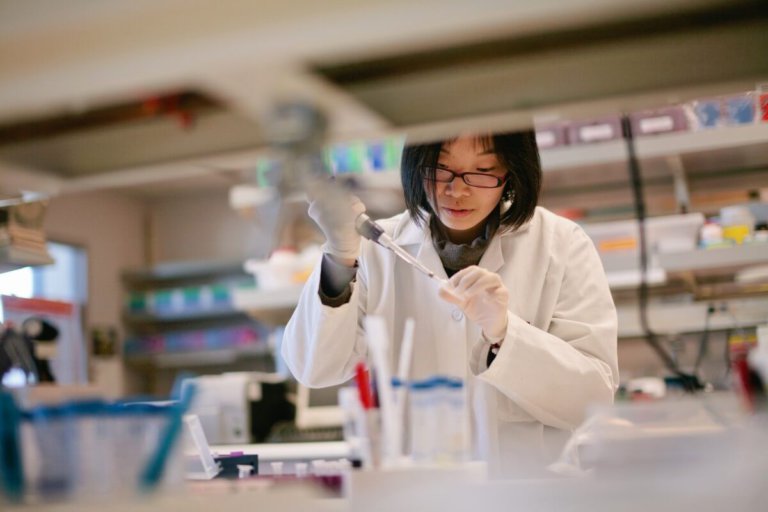
If you’re passionate about healthcare and engineering, why not fuse your love for both fields with an undergraduate or postgraduate degree in biomedical engineering?
Biomedical engineering can be broadly described as a multidisciplinary field that involves the application of engineering principles in creating and designing medicine and healthcare-related devices and equipment.
Professionals in the field can find employment across various sectors, including manufacturing, universities, hospitals and research facilities. Their work entails developing the technologies with the potential to saves lives.
The US Bureau of Labor and Statistics projects that employment of biomedical engineers will grow by four percent from 2018 to 2028, about as fast as the average for all occupations. They note that the increasing number of technologies and applications to medical equipment and devices, along with the medical needs of a growing and aging population, will require the services of biomedical engineers.
Despite being a promising field of study, it’s easy for prospective students to lose themselves amid the labyrinth of global universities. However, North America has carved itself a reputation as a popular study abroad destination for international students. The US is home to numerous leading universities that not only promise academic excellence, but also unparalleled learning experiences through, unique sights and culture.
If your interest is piqued, here are four leading North American universities that are preparing job-ready biomedical engineering graduates:
DEPARTMENT OF BIOMEDICAL ENGINEERING, MICHIGAN STATE UNIVERSITY
This public university was founded in 1855 and is ranked among the world’s top 100 universities, according to the US News and World Report. Its Department of Biomedical Engineering (BME) engages faculty across disciplines, departments and colleges to explore the intersection of medicine, human biology, and engineering research, design and practice.
MSU has established itself as a leader in interdisciplinary biomedical research; BME’s resources are enhanced by collaborations throughout the College of Engineering, along with other MSU Colleges, including Human Medicine; Osteopathic Medicine; Veterinary Medicine; Nursing; Natural Science; and Communications Arts and Sciences. This ensures students enjoy a holistic education.

Shutterstock
Those looking for a graduate degree in biomedical engineering will find BME ideal as it offers both PhD and Master’s programmes. Students can tailor their programme to fit their background, capabilities and goals thanks to BME’s wide course offerings and research activities. For instance, MSU’s Doctor of Philosophy in Biomedical Engineering prepares graduates to review technical literature related to a biomedical engineering research problem and communicate those results through oral presentations and written publications.
To further strengthen students’ professional skills and experiences, the university also offers the MSU Broadening Experiences in Scientific Training (BEST) . Under this programme, biomedical graduate students and postdoctorates have the unique opportunity to complement their academic and scientific training and develop a parallel set of skills and experiences that position them for a wide range of career options, including academic, government, industry, non-profit, law, to name a few.
Students can expect intensive and supportive mentoring, professional development experiences, in addition to specialised professional experiences to enhance the traditional PhD training.
JACOBS SCHOOL OF ENGINEERING, UNIVERSITY OF CALIFORNIA SAN DIEGO (UC SAN DIEGO)
UC San Diego is recognised as one of the top 15 research universities worldwide. Its main campus is located near the Pacific Ocean on approximately 1,200 acres of coastal woodland in La Jolla, California. The university has carved itself a strong reputation in global rankings; for instance, US News and World Report named UC San Diego the 17th best university in the world and the nation’s 5th best public university in 2018 for research.
The university’s Jacobs School of Engineering offers both undergraduate and postgraduate biomedical engineering programmes. Bachelor programmes include the BS Bioengineering, BS Bioengineering: Biotechnology, BS Bioengineering: Bioinformatics and BS Bioengineering: BioSystems.

Shutterstock
Meanwhile, graduate students find that their MS graduate curriculum emphasises physiology, tissue engineering, biomechanics and transport phenomena. Associated courses are also available on campus in applied mathematics, physics, chemistry, biology, solid and fluid mechanics, electronics, computers, information sciences, system analysis, neurosciences, pathology, pharmacology and clinical subjects.
Some of the core courses required for the university’s Master of Engineering Curriculum include Mathematical Methods for Bioengineering, Thermodynamics, Statistical Mechanics, Interfacial Phenomena in Living Systems, Cardiovascular Physiology, Tissue Engineering and Regenerative Medicine: Foundations, among others. Students are required to select six.
There are also a wide range of graduate research areas, including bioengineering analysis of blood flow,
microvascular perfusion and exchange, cell mechanics in the passive and active state, molecular biology of cells and membranes in relation to cell deformability and adhesion, among others.
DEPARTMENT OF MECHANICAL, AEROSPACE AND BIOMEDICAL ENGINEERING, UNIVERSITY OF TENNESSEE KNOXVILLE (UT AT KNOXVILLE)
If you’re looking for a university that prides itself on preparing the next generation of skilled engineering professionals who are ready to respond, adapt and evolve with future demands, you might want to consider UT at Knoxville.
This public research institution offers prospective students an affordable place to study. According to PayScale, the cost of living in Knoxville is 18 percent lower than the national average.

Shutterstock
Its Department of Mechanical, Aerospace and Biomedical Engineering (MABE) offers three undergraduate and graduate degree programmes, one of which includes BS in biomedical engineering (BME). Each undergraduate programme is accredited by the Engineering Accreditation Commission of ABET, “a nonprofit, non-governmental agency that accredits programmes in applied and natural science, computing, engineering and engineering technology”.
Postgraduate programmes in the field include the MS Biomedical Engineering and PhD Biomedical Engineering.
FACULTY OF ENGINEERING, UNIVERSITY OF WATERLOO
This public university is located in Ontario – Canada’s technology hub. The institution is renowned for its extensive research collaborations, which include partnerships with almost 800 Canadian companies and 300 international companies, as well as many leading universities around the world. This sets it apart from other engineering schools.
Waterloo is Canada’s largest engineering school and is rated among the world’s top 50 engineering schools, according to QS World Rankings 2019. The university offers undergraduate and postgraduate programmes in biomedical engineering, which allow you to use engineering know-how to develop better ways to diagnose illnesses, treat health problems and enhance health.

Shutterstock
Here, students can expect to design bionic limbs, create laser-guided surgical devices and develop wearable tech to improve the performance of athletes. You’ll also have the chance to study biomechanics, physics, chemistry and design.
This will provide you with a broad base of knowledge that will enable you to collaborate with various experts; biologists, medical practitioners, policy makers, and engineers, among others. Students will also learn to model and design complex biomedical systems, putting theory into practice through hands-on experience from two years of paid co-op work terms, plus a fourth-year design project. Meanwhile, the graduate programme allows students to branch into biomedical research.
*Some of the institutions featured in this article are commercial partners of Study International
Liked this? Then you’ll love…
Explore multiple career avenues with a degree in Mechanical Engineering
Turn ideas into a reality: 5 leading universities for Mechanical Engineering







